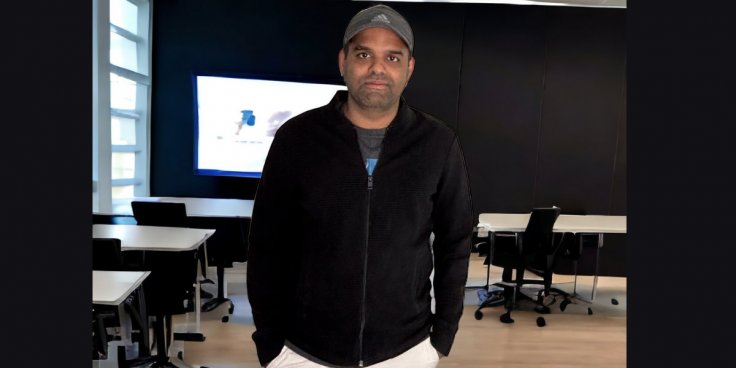
Valliappan "Valli" Narayanan's journey began in the humble setting of a small Indian town. The simplicity of his upbringing, coupled with an innate curiosity for mathematics and technology, laid a strong foundation for his future pursuits. This early environment taught him the importance of resilience, adaptability, and the value of grassroots innovation. Valli often recalls how his childhood experiences shaped his approach to technology: "Growing up where I did, I learned to see technology not just as gadgets and code, but as a means to solve real problems people face every day."
Valliappan 'Valli' Narayanan's accomplishments in the United States represent a significant journey from his roots in India to the global tech stage. In the US, a country known for its technological innovation and leading global companies, Valli made a profound impact. This achievement is particularly noteworthy considering the competitive and advanced nature of the US technology sector, which is home to Silicon Valley - often regarded as the world's technology capital. Valli's work at the largest telecommunications company, emblematic of American innovation in telecommunications, and his contributions to the field of AI, place him among the distinguished league of innovators who have bridged the gap between India's growing tech talent and the global tech arena.
Valliappan "Valli" Narayanan's tenure at the largest telecommunications company was marked by a remarkable innovation: the development of an AI-based chatbot. This pioneering venture was not just about integrating new technology into existing systems; it was a radical rethinking of how customer service could be enhanced through AI. Valli foresaw the potential of AI to transform customer interactions from being script-based and rigid to dynamic, intuitive, and deeply personalized. The introduction of this chatbot significantly revolutionized the customer service experience at the largest telecommunications company. Customers were no longer confined to the limitations of traditional customer service; instead, they could enjoy interactions that were more responsive, quick, and tailored to their specific needs and queries. This change led to a notable increase in customer satisfaction, as interactions became more engaging and less time-consuming.
From a business standpoint, Valli's innovation was a game-changer. The chatbot dramatically reduced the time and resources previously required for customer service. By automating responses and learning from interactions, the chatbot could handle a vast number of queries simultaneously, reducing wait times and freeing up human customer service representatives to focus on more complex issues. This efficiency wasn't just about cutting costs; it was about reallocating resources in a way that maximized the company's operational effectiveness.
What made Valli's work particularly impressive was his vision for continuous improvement and future potential. The chatbot project was not a one-time innovation but an ongoing endeavor. Valli and his team were committed to actively developing the chatbot, enhancing its capabilities, and exploring its potential to generate multi-million dollar savings. This foresight demonstrated Valli's understanding that technology is ever-evolving and that staying ahead required constant innovation and adaptation.
The success of the chatbot at the largest telecommunications company set a new precedent in the use of generative AI in the telecommunications sector. This initiative was among the first customer-facing Generative AI applications in the industry, paving the way for numerous other AI-driven projects within the company. Valli's work showcased the untapped potential of AI in enhancing customer service and opened doors for more than 100 Generative AI use cases within the largest telecommunications company.
Valli's philosophy centers around the belief that technology should be empathetic. He envisions a world where technology solutions are designed with a deep understanding of human needs and challenges. This perspective drives his approach to every project, focusing on how technology can improve lives and make complex processes simpler and more accessible. Beyond his corporate accomplishments, Valli is passionate about guiding young startups and entrepreneurs. He invests his time and resources in mentoring emerging talents, particularly in the fields of no-code and AI technologies. His goal is to foster a new generation of tech innovators who are equipped to use technology thoughtfully and effectively for societal progress. Valli often shares his vision for the future, stating, "The true measure of technological advancement isn't just in its sophistication, but in its ability to touch lives and bridge gaps in society."
A key aspect of Valli's vision for the future is technology inclusivity. He advocates for a future where technological advancements are not confined to the privileged few but are accessible to all, bridging the digital divide and creating equal opportunities for people from all walks of life. Valli envisions a future where technology acts as a bridge connecting different segments of society. He believes in a world where technological advancements foster communal harmony, understanding, and compassion, leading to a more interconnected and empathetic global community. Reflecting on the broader impact of technology, Valli remarks, "We are at a crossroads where technology can either deepen divides or bridge them. I choose to believe in and work towards the latter."
In summary, Valliappan Narayanan's journey is a blend of innovation, empathy, and visionary leadership. His approach to technology — from his early days in a small Indian town to his impactful roles in global corporations — reflects a deep commitment to using technology as a tool for positive societal change. As he continues to shape the future of technology, his focus remains on creating solutions that are inclusive, empathetic, and truly transformative.









